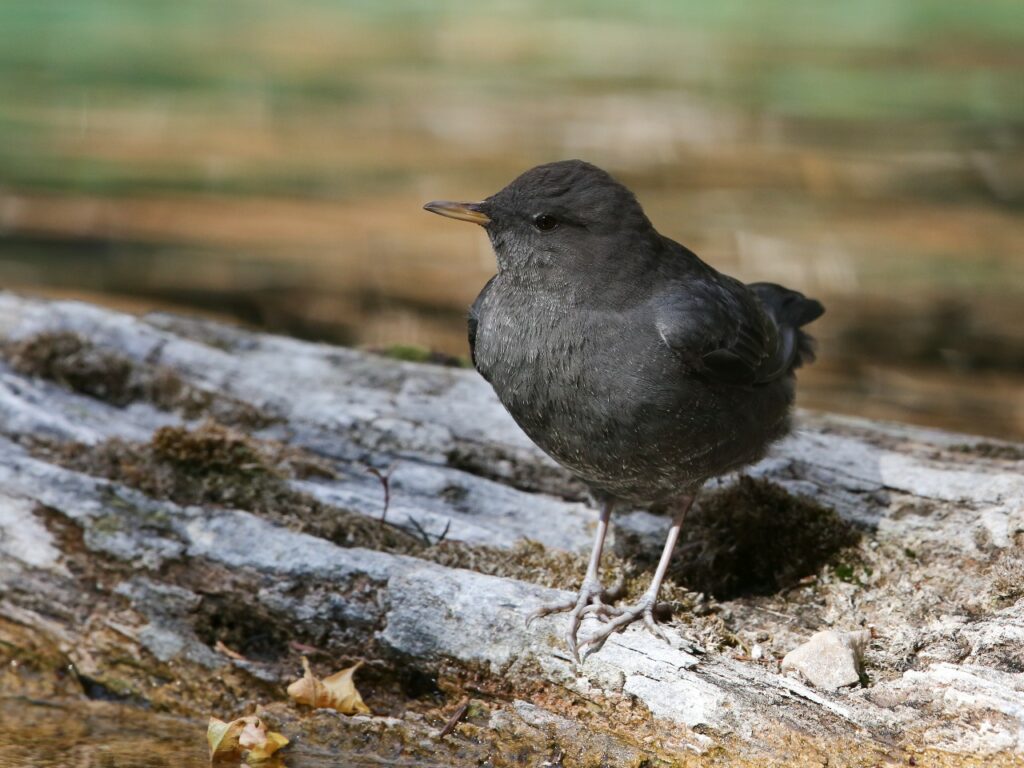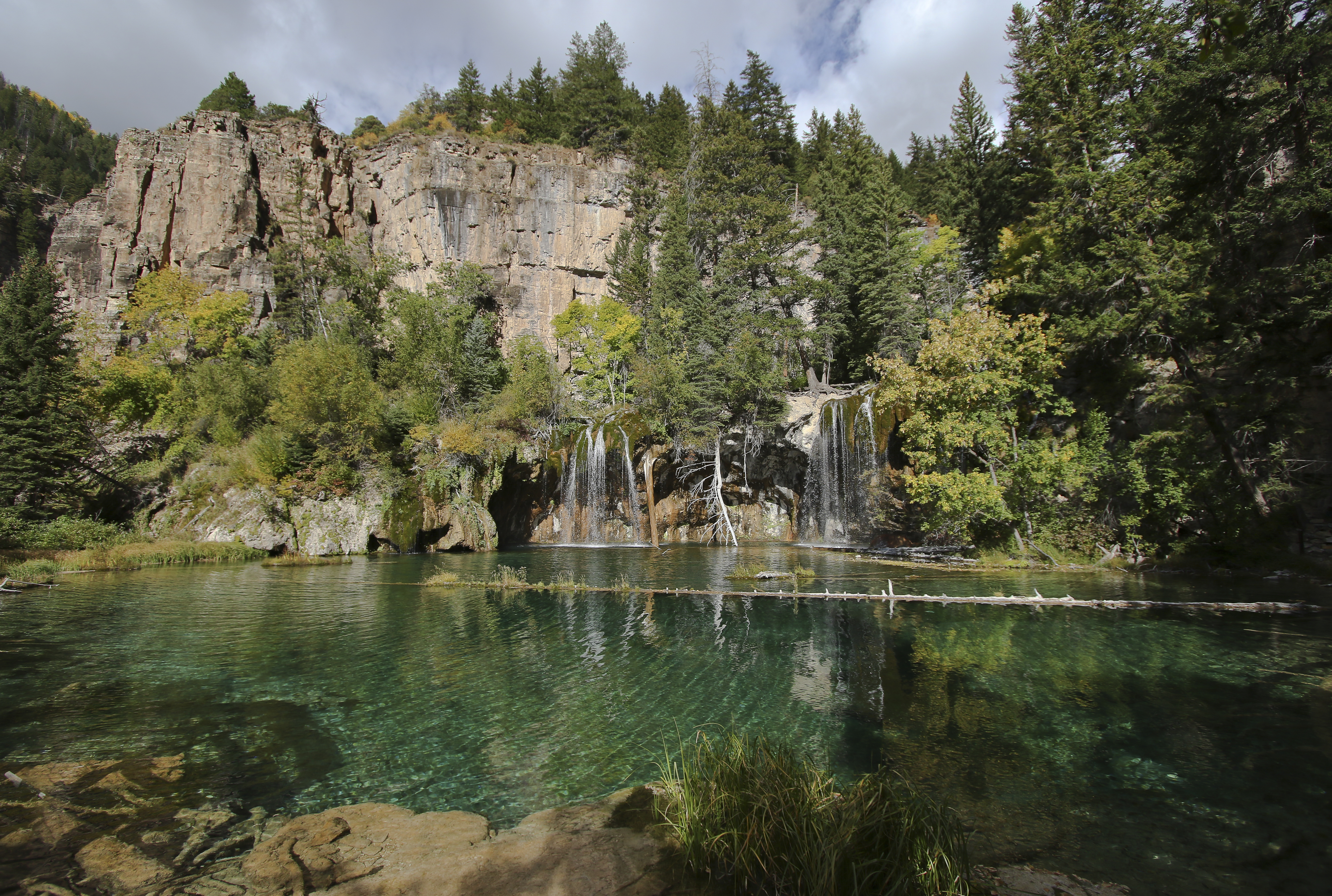The Amazing Aquatic Songbird

By Wayne Bierbaum
Each fall, bird migration brings some uncommon visitors to new locations on their way to more favorable climates. In the southwest U.S., an unusual songbird, the American dipper, makes a stopover to fish in the rivers and streams.
In 2019, I hiked to a National Natural Landmark in Colorado called Hanging Lake. This unusual and beautiful geological formation was created by the partial collapse of a mountain side. The collapse created a cup-like area that, after being fed by a snow-fed stream and a spring, formed an enchanted lake. The green water and unique plant life are due to a travertine deposit, a limestone-like rock.
There, I met the American dipper, North America’s only truly aquatic songbird.
A log lies diagonally into the right side of the lake and on that log, I spotted a dark bird walking back and forth. It would occasionally stop and stick its head and neck underwater. I saw it disappear entirely underwater twice and then emerge at another spot. After I watched it hunt for food for a while, the bird moved to a sunny part of the log and started singing. It was a lovely sound, like the trilling of a winter wren’s morning song.
The American dipper is the only songbird that feeds on underwater insects and small fish. They walk and use their wings under the water as they search crevasses for prey. They are frequently found around cold fast-flowing streams and need special metabolic adaptations to prevent the cold from damaging their bodies. Their blood has an increased oxygen-carrying capacity and they have thick dense feathers that block water penetration. They even have long feathers on the edges of their eyelids to help clear their sight when exiting the water.

Dippers make a tent-like domed nest along the edge of a stream or behind a waterfall or under a bridge crossing a stream. The nest usually includes moss, which is kept moist by the water spray from the nearby stream. Females craft the nest but both parents will take care of the young. The young will leave the nest in about 30 days and follow their parents as they learn the necessary underwater skills.
At the end of the summer, after the young are on their own, the older birds will molt all their flight and tail feathers, rendering them flightless—they then have to avoid predators by running on the ground or submerging underwater. By the fall, the flight feathers have regrown.
Winters are stressful for the dippers. Most of the birds will stay near their favorite river or stream but some migrate to more hospitable areas. Dippers from climates such as Alaska will move farther south. When I’m in southern Colorado, I expect to find dippers that spend their summers at streams at elevations above 9,000 ft, where the aquatic insects are still present under rocks. I have seen a dipper on the Fraser River, a tributary of the Colorado River, once when there was four feet of snow on the ground and the rocks in the stream were covered with ice.
These amazing birds have seen a decline in numbers due to damage to their stream habitats. Some biologists consider them like the canary in a coal mine because when they abandon a stream, it means the stream is too fouled up. Stream restoration has stabilized some of the population but the little dippers are still considered endangered.
I’m soon heading to an area around the Arkansas River and hope to visit with this remarkable bird again.

